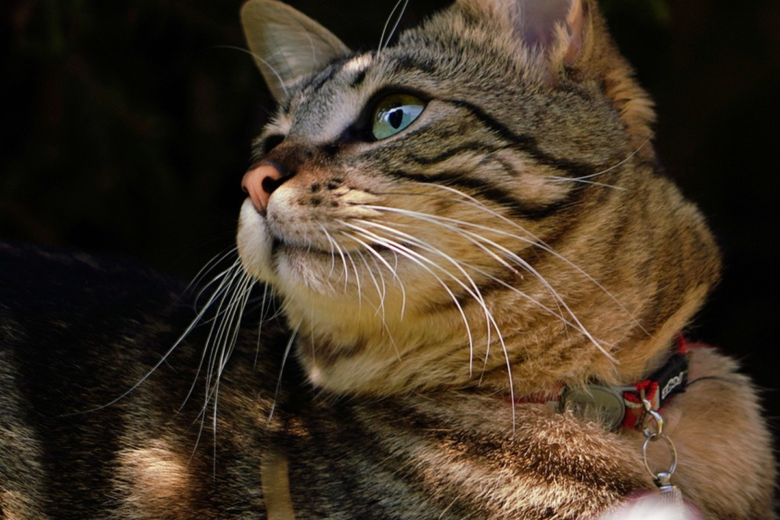Exploring the fascinating universe of cats is unveiling a unique journey of understanding and connection. This article delves into the intricate paths of feline training, revealing effective techniques for basic commands, environmental enrichment, and overcoming common challenges. Discover how to strengthen the bond with your feline, promoting a harmonious coexistence full of learning and complicity.
1. Debunking the Myth of Cats’ Untrainability
Many people mistakenly believe that cats are too independent animals to be trained. This belief, however, is far from the truth. Cats are, by nature, intelligent and adaptable beings.
The challenge lies in understanding their unique language and using training methods that respect their natural characteristics. The first thing to understand is that cat training is based on positive reinforcement. Unlike dogs, punishing a cat for unwanted behavior is not effective.
Instead, rewarding desired actions with affection, praise, or treats creates a positive association. This encourages the cat to repeat the desired behavior. Patience is crucial, as each cat has its own learning pace. Furthermore, it is essential to respect the individuality of each feline, as their personalities vary widely.
2. Training Basic Commands for Cats
Teaching basic commands can establish more effective communication between the owner and the cat. The “sit” command is a good starting point. Using a treat as a reward, lift the treat above the cat’s head, encouraging him to sit up to reach it.
Associate the verbal command “sit” with this action. Although this process can take time, consistency is essential for success. Introducing interactive toys during training can also make sessions more engaging for the cat, promoting a playful approach. Another useful command is “come”.
Use an encouraging tone of voice and a treat to attract the cat towards you. As he approaches, reward and praise him. Repetition and consistency are key to strengthening this behavior. Short, positive sessions are more effective than prolonged training that can frustrate your cat. Remember to adapt training according to your cat’s personality and individual preferences, making the process more efficient and enjoyable.
2.1. Developing Command Communication:
In addition to the “sit” command, exploring other commands, such as “lie down” and “roll over”, strengthens communication between the guardian and the cat. Each command represents a unique form of interaction, providing mental and physical stimulation for the feline. Consistency and the use of positive reinforcement continue to be fundamental to success in this process.
2.2. Commands Associated with Daily Activities:
Integrating commands into daily activities, such as “waiting” before receiving food, adds practical utility to training. This not only reinforces learned commands but also promotes desired behaviors in everyday situations. Patience and repetition are crucial to consolidate these associations in the cat’s mind, making learning more effective and applicable in everyday life.
3. Training for Specific Behaviors and Skills
In addition to basic commands, it is possible to train cats for specific behaviors and even notable skills. For example, teaching a cat to use a specific litter box, to use a scratching post instead of furniture, or even to perform tricks like giving a paw.
The key to success lies in patience and creating positive associations, making learning enjoyable for the cat. When training specific behaviors, use positive reinforcement whenever the cat performs the desired action. If you are teaching how to use a scratching post, offer rewards and praise whenever the cat uses the appropriate object.
In trick training, break tasks into smaller steps, progressively rewarding your cat as he completes each step correctly. Training a cat is not only possible, it is also an effective way to improve coexistence and strengthen the bond between the owner and the feline. With understanding, patience, and positive reinforcement-based methods, it’s surprising what cats can learn and accomplish.
4. Environmental Enrichment: Stimulating Natural Learning
Cat training goes beyond basic commands and can include environmental enrichment. Cats are curious and exploratory animals, and providing a stimulating environment is essential for their well-being. Introduce interactive toys, scratching posts, and even visual stimuli, like birds outside the window, to keep your cat mentally active.
By enriching the environment, you encourage positive behaviors and reduce the likelihood of unwanted behavior. Taking your cat’s individual preferences into account is crucial. Some cats may be interested in toys that make sounds, while others prefer mental challenges, such as toys that dispense treats. Observing your cat’s reactions and adapting the environment accordingly contributes significantly to a harmonious coexistence.
- Exploring New Horizons: Environmental enrichment not only stimulates your cat’s natural learning, but also encourages him to explore new horizons. Providing varied experiences, such as different boxes, textures and sounds, expands the feline’s behavioral repertoire. The gradual introduction of new stimuli promotes an enriching and dynamic environment.
4.1. Exploring the Hunting Instinct:
Integrating toys that simulate prey, such as wands with feathers, allows the cat to exercise its hunting instinct in a safe and fun way. These activities not only provide mental stimulation, but also promote physical activity, contributing to the feline’s overall health. Creating opportunities for your cat to chase, jump and capture objects stimulates its agility and dexterity.
4.2. Rotation of Toys and Elements in the Environment:
Introducing new toys and rotating elements in the environment maintains the cat’s interest over time. Cats can quickly tire of the same stimuli, so offering variety is essential. Observing your cat’s preferences and adjusting environmental enrichment as needed ensures your cat remains engaged and content in their space.
5. Overcoming Challenges: Cats and Carriers
One of the biggest challenges for cat owners is visiting the vet or traveling. However, it is possible to train your cat to accept the carrier positively. Initially, leave the box accessible to the cat, without automatically associating it with visits to the veterinarian.
Place treats or cozy blankets inside the crate to make it attractive. Over time, reward the cat whenever he voluntarily enters the box. Associate the box with positive experiences, such as playing and cuddling. This gradual training can reduce stress during travel and veterinary appointments, making these moments less challenging for both the cat and the owner.
A Safe Haven: Transforming the carrier into a safe haven is essential. Leave the box in accessible and positive places, so that the cat associates it with pleasant moments. Adding a soft, familiar cushion inside the box provides extra comfort. Gradually, the box will become a safe space for the cat, reducing anxiety in transport situations.
Conclusion
Training a cat is a journey that requires understanding, patience and adaptation. Respecting the individuality of each feline, considering their preferences and providing an enriched environment are essential steps.
- A Strengthened Bond: In addition to providing practical benefits, training strengthens the bond between the owner and the cat. Patience and affection during training sessions not only teach commands, but also contribute to a relationship of trust and complicity.
- An Ongoing Journey: The journey of learning together becomes a source of joy for both the cat and its caregiver. As the owner commits to understanding the cat’s needs and constant adaptation, the training journey becomes a continuous experience of discovery and strengthening the emotional bond.




